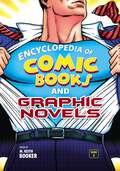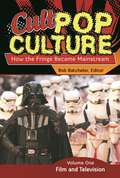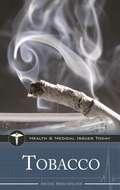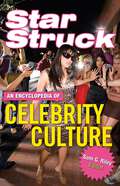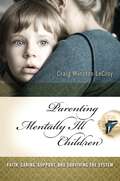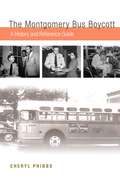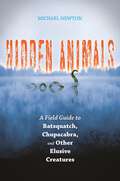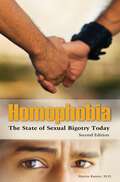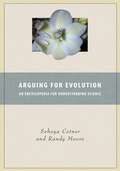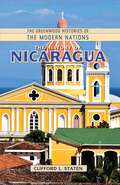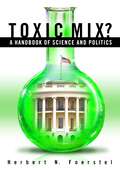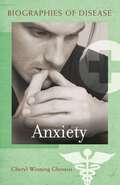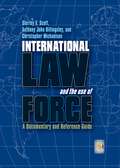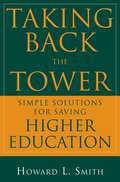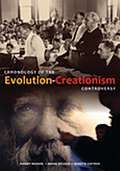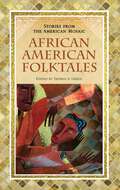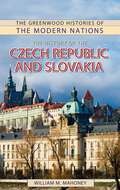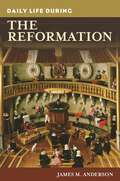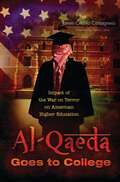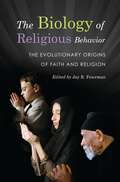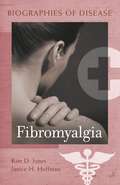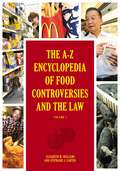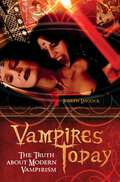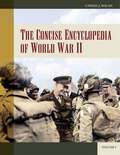- Table View
- List View
Encyclopedia of Comic Books and Graphic Novels [2 volumes]: [2 volumes]
The most comprehensive reference ever compiled about the rich and enduring genre of comic books and graphic novels, from their emergence in the 1930s to their late-century breakout into the mainstream.At a time when graphic novels have expanded beyond their fan cults to become mainstream bestsellers and sources for Hollywood entertainment, Encyclopedia of Comic Books and Graphic Novels serves as an exhaustive exploration of the genre's history, its landmark creators and creations, and its profound influence on American life and culture. Encyclopedia of Comic Books and Graphic Novels focuses on English-language comics—plus a small selection of influential Japanese and European works available in English—with special emphasis on the new graphic novel format that emerged in the 1970s. Entries cover influential comic artists and writers such as Will Eisner, Alan Moore, and Grant Morrison, major genres and themes, and specific characters, comic book imprints, and landmark titles, including the pulp noir 100 Bullets, the post-apocalyptic Y: The Last Man, the revisionist superhero drama, Identity Crisis, and more. Key franchises such as Superman and Batman are the center of a constellation of related entries that include graphic novels and other imprints featuring the same characters or material.
Cult Pop Culture [3 volumes]: How the Fringe Became Mainstream [3 volumes]
by Bob. BatchelorThis three-volume collection of original essays examines cult pop culture, the often-seedy underbelly of American popular culture.Cult Pop Culture: How the Fringe Became Mainstream is the first collection dedicated to the quirky, offbeat aspects of American popular culture that people have loved, enjoyed, (and in some cases) worshiped over the last 50 years. By examining the people and subjects we hold most dear, this three-volume set offers deep insights into what Americans think, feel, and cherish.Organized by subject, the collection enables readers to focus on a given topic or compare different subjects across cult phenomenon. Volume One of the set covers film and television topics, Volume Two examines music and literature, and Volume Three explores sports, clubs, and the cult industry. Through this investigation of sublime, transcendent, and idiosyncratic trends, readers will learn more about iconic individuals, topics, and subjects that form the vast underbelly of American culture. By revealing how tightly interwoven cult topics are with the public's broader notion of popular culture, the collection underscores the blurry line between normal and abnormal, grandiose and degradation.
Tobacco (Health and Medical Issues Today)
by Arlene HirschfelderThis book offers a comprehensive introduction to historic and contemporary efforts to regulate tobacco and reduce the staggering number of people who die from using tobacco products.With calls for greater government regulation of tobacco culminating in the historic June 2009 passage of federal antismoking legislation, Tobacco could not be more timely. It is the most authoritative and accessible volume available on the evolution of tobacco consumption as well as efforts to protect consumers from its dangers.Tobacco focuses on five key issues: tobacco excise taxation and health policy; the often misleading advertising of cigarettes and "low tar/nicotine" alternatives; the role of the Food and Drug Administration in regulating tobacco; education and prevention efforts aimed at children and teens; and environmental tobacco health risks, including second hand smoke. It is an eye-opening introduction to the entire history of efforts to regulate tobacco—from its beginnings in the Progressive Era of the early 20th century to recent efforts to uncover suppressed medical reports, ban smoking ads, and get smoking out of the movies.
Star Struck: An Encyclopedia of Celebrity Culture
by Sam RileyThis balanced examination looks at America's pervasive celebrity culture, concentrating on the period from 1950 to the present day.Star Struck: An Encyclopedia of Celebrity Culture is neither a stern critic nor an apologist for celebrity infatuation, a phenomenon that sometimes supplants more weighty matters yet constitutes one of our nation's biggest exports. This encyclopedia covers American celebrity culture from 1950 to 2008, examining its various aspects—and its impact—through 86 entries by 30 expert contributors.Demonstrating that all celebrities are famous, but not all famous people are celebrities, the book cuts across the various entertainment medias and their legions of individual "stars." It looks at sports celebrities and examines the role of celebrity in more serious pursuits and institutions such as the news media, corporations, politics, the arts, medicine, and the law. Also included are entries devoted to such topics as paranoia and celebrity, one-name celebrities, celebrity nicknames, family unit celebrity, sidekick celebrities, and even criminal celebrities.
Parenting Mentally Ill Children: Faith, Caring, Support, and Surviving the System
by Craig Winston LeCroyThis in-depth exploration uses individual portraits to show what parents face as they love and care for their mentally ill children and cope with how the mental health system has failed them.The Surgeon General has identified children's mental illness as a national problem that creates a burden of suffering so serious as to be considered a health crisis. Yet, what it means to be the parent of a mentally ill child has not been adequately considered—until now. Parenting Mentally Ill Children: Faith, Caring, Support, and Survival captures the essence of caring for these youngsters, providing resources and understanding for parents and an instructive lesson for society.Author Craig Winston LeCroy uses in-depth interviews to chronicle the experiences of parents of mentally ill children as they attempt to survive each day, obtain needed help, and reach out for support, and he lets them share their misunderstood emotions of shame, anger, fear, guilt, and powerlessness in the face of stigma from professionals, family, and friends. The book concludes with a critical appraisal of the social policies that must be implemented to help—and the reasons we should feel obligated to initiate them.
The Montgomery Bus Boycott: A History and Reference Guide (Non-ser.)
by Cheryl PhibbsA revealing, comprehensive, and detailed account focusing on the people and personalities behind the Montgomery, Alabama, Bus Boycott in 1955–1956, which became the catalyst for a national civil rights movement.The Montgomery Bus Boycott: A History and Reference Guide offers a comprehensive account of a critical turning point in American history. It offers a richly detailed chronological trip through post-World War II Southern society to the early 1960s, then focuses on the day-to-day frustrations, challenges, and victories of the people behind the protest that inspired a nationwide movement.The Montgomery Bus Boycott fills a gap in available resources with its comprehensive portrait of mid-1950s Montgomery—the mainly black, uneducated female protestors, activist Rosa Parks, Dr. King, and the white society desperate to keep intact the only culture they understood. Firsthand news reports, editorials, quotes, eyewitness accounts, and behind-the-scenes stories of political maneuvering help readers experience this dramatic—and still reverberating—victory over oppression.
Hidden Animals: A Field Guide to Batsquatch, Chupacabra, and Other Elusive Creatures (Non-ser.)
by Michael NewtonA global survey of unknown creatures reported by thousands of eyewitnesses—creatures that have either been verified, refuted, or are still being examined by scientific researchers.Hidden Animals: A Field Guide to Batsquatch, Chupacabra, and Other Elusive Creatures welcomes readers into the fascinating world of cryptozoology—the scientific pursuit of legendary creatures that sometimes reveals hoaxes and sometimes identifies real, previously unknown species. Compiled by Michael Newton, author of the acclaimed Encyclopedia of Cryptozoology, it is the first comprehensive guide covering the crossroads of zoology and folklore written for both the young and the young at heart.Organized by type of creature type, such as giant animals, missing links, and living fossils, Hidden Animals surveys various beings reported and pursued worldwide from ancient times to the present, in every corner of the globe. In the process, it relates classic myths and legends to identified flesh-and-blood animals. Readers will be captivated by both the scientific evidence supporting the existence of specific cryptids and the exposure of notorious frauds or cases of mistaken identity.
Homophobia: The State of Sexual Bigotry Today
by Martin Kantor MDTen years after he first brought us the book Homophobia, which laid bare the harsh realities and harmful effects of this sexual bigotry, psychiatrist Martin Kantor delves again into prejudice and discrimination—even flat-out acts of absolute hatred—against gays in the United States. Have things changed? One might think so. Ten years ago Matthew Shephard was strung up to die on a fence because he was gay. But no such blatant hatred has made headlines here since the turn of the millennium. Ten years ago, Pat Robinson authored a book that assured lasting peace would only occur when a group including drug dealers, assassins, worshippers of Satan, and homosexuals are no longer on top. Yet, by 2007, Robinson was pledging support for pro-gay Republican presidential candidate Rudy Giuliani. And gays only longing for a formal relationship a decade ago are now entering into civil unions, even gay marriage, in states that have legalized the ceremonies. Hate crime laws have been revised to include gays, and gays are now recognized in domestic partner clauses common across insurance polices. People appear open about homosexuality in the media; gays are featured on television shows and in movies alongside straights. The advances seem great.But they are only surface advances, cautions Kantor. Because the consequences of hate crimes are a lot more severe than they used to be, gays and lesbians are being hunted down and beaten up less frequently than they once were. But people are still full of hate, just more wary of punishment so more circumspect about how they express it. In this new edition, Kantor tells in harsh detail how and why people still fire off slurs like faggot and dyke, and threaten harm, from blowing up their homes to bashing in their heads. Kantor takes us across sites in America - from city streets to hospitals, schools, broadcast stations, and churches to police departments—showing how homophobia is still very much alive. While the problem may be less acute it is still chronic, and while it may not take as many lives, it ruins perhaps even more, he explains. Homophobia is a phenomenon that in significant respects parallels mental illness, adds the psychiatrist. Education alone will not stem the homophobic tide. We also need to uncover and treat the psychoneurotic dimension of homohatred. Yes, we can admire the changes in homophobia over the last decade, but we must not forget or ignore the fact that the human beings who create homophobia haven't changed that much even over the centuries.
Arguing for Evolution: An Encyclopedia for Understanding Science
by Sehoya H. Cotner Randy MooreThis timely encyclopedia presents an arsenal of evidence for evolution that goes beyond the typical textbook examples.Arguing for Evolution: An Encyclopedia for Understanding Science provides readers with a single source for the scientific evidence supporting evolution. The book shows how scientists have tested the predictions of evolutionary theory and created an unshakeable foundation of evidence supporting its truth. As such, it demonstrates how evolution serves as a case study for understanding the scientific method and presents a logical model for scientific inquiry.The evidence for evolution is presented historically and topically in an accessible, example-rich, and logical format, using an arsenal of examples that goes beyond the typical textbook matter. The chapters are structured around a series of hypotheses that the authors put to the test, amassing evidence on fossils, comparative anatomy, molecules, and evolutionary biology in order to conclude that evolution is scientific fact. Learning about this fascinating field is enhanced through "see for yourself" examples that include original data and figures from key historical and contemporary papers in evolutionary biology.
The American Beauty Industry Encyclopedia
by Julie WillettThis is the first encyclopedia to focus exclusively on the many aspects of the American beauty industry, covering both its diverse origins and its global reach.The American Beauty Industry Encyclopedia is the first compilation to focus exclusively on this pervasive business, covering both its diverse origins and global reach. More than 100 entries were chosen specifically to illuminate the most iconic aspects of the industry's past and present, exploring the meaning of beauty practices and products, often while making analytical use of categories such as gender, race, sexuality, and stages of the lifecycle.Focusing primarily on the late-19th and 20th-century American beauty industry—an era of unprecedented expansion—the encyclopedia covers ancient practices and the latest trends and provides a historical examination of institutions, entrepreneurs, styles, and technological innovations. It covers, for example, the 1911 Triangle Shirtwaist Factory fire, as well as how Asian women today are having muscle fiber removed from their calves to create a more "Western" look. Entries also explore how the industry reflects social movements and concerns that are inextricably bound to religion, feminism, the health and safety of consumers and workers, the treatment of animals, and environmental sustainability.
The History of Nicaragua (The Greenwood Histories of the Modern Nations)
by Clifford L. Ph.D.This concise history of Nicaragua provides the reader with a history of the ways in which key political and economic factors have contributed to the creation of the modern nation.Notwithstanding Nicaraguan President Daniel Ortega's disdain for the United States, our nation has played a significant role in shaping Nicaraguan nationalism, as well as the country's political, economic, and social systems. The History of Nicaragua was written, in part, to help students and other interested readers understand that relationship, providing them with an up-to-date, concise, and analytical history of the Central American nation. The book begins by describing the people, geography, culture, and current political, economic, and social systems of Nicaragua. The remainder of the volume is devoted to a chronological history, emphasizing recurring themes or factors that have shaped the modern state. These include the importance of elite families such as the Somoza dynasty that ruled for more than 40 years. Other topics include the agro-export model of economic development, modern Nicaraguan nationalism, the Sandinista revolution and its legacy, and the democratic transition that began in 1990.
Toxic Mix?: A Handbook of Science and Politics (Non-ser.)
by Herbert N. FoerstelThis book presents a comprehensive analysis of the contentious relationship between the White House and the scientific community from the FDR administration to the Obama administration.Toxic Mix?: A Handbook of Science and Politics takes a topic very much in the center of public debate in the last decade and places it in a revealing historical context. It follows the often contentious relationship of science and politics from the FDR era to the current Obama administration, highlighting the many highly charged moments when the two were in conflict.Toxic Mix? ranges across the major areas of scientific inquiry with public policy implications, including atomic energy, space science, public health, stem cells, sexual reproduction, environmental science, global warming, and evolution, to examine important events where political imperatives and scientific research were at odds. In addition, the book looks at another important area where politics and science are at cross purposes; immigration—as many of our most accomplished degree earners are foreign born and are unable to stay and work in the United States. A final chapter analyzes the attempts by the early Obama administration to build public policy that embraces science rather than manipulates it.
Anxiety (Biographies of Disease)
by Cheryl Winning GhinassiThis engagingly written survey covers the history of anxiety disorders and current approaches to their definition and treatment.Anxiety disorders are significant mental health illnesses that impair lives and cost society millions of dollars in health care expenses and lost productivity. Greater awareness of anxiety disorders is essential for both the general public and health professionals if those who suffer from them are to be identified, receive proper treatment, and have a chance at leading fulfilling lives.To that end, Anxiety begins with a historical overview of the ways in which anxiety disorders have been understood, from the prehistoric era until the present time, examining the disorders from the perspectives of conceptualization, classification, research, and treatment. Subsequent chapters examine these themes in light of our current understanding and approaches to anxiety disorders. Current diagnostic and assessment methods are discussed, as are modern treatment options. The book concludes with a survey of the future directions in research for the understanding and treatment of anxiety disorders.
International Law and the Use of Force: A Documentary and Reference Guide (Praeger Security International)
by Shirley V. Scott Anthony John Billingsley Christopher MichaelsenThis book is a discussion of key documents that explain the development, current status, and relevance of the international law governing the initiation of military hostilities.International Law and the Use of Force: A Documentary and Reference Guide brings to life a crucial body of law, explaining its historical origins, the core rules and principles of the regime embodied in the Charter of the United Nations, and contentious aspects of that law in the contemporary world. In light of the intensified interest in the question of justified or unjustified use of force, this timely resource introduces and analyzes over 40 documents relating to the legality of the initiation of military hostilities. The volume presents competing assessments of the legality of key uses of force and explains mainstream positions on important issues such as national right to self-defense, anticipatory and preemptive self-defense, terrorism, aggression, and the role of the UN Security Council. The book concludes by assessing whether the international law that seeks to limit the number of wars has in fact made the world a more peaceful place.
Taking Back the Tower: Simple Solutions for Saving Higher Education
by Howard L. SmithAcademia is in trouble. Taxpayers are fed up with the enormous expenses associated with public universities, as well as administrators whose strategies and goals are fuzzy at best and destructive at worst. Parents worry about how they will find the wherewithal to send their offspring to college. Employers question the ability of new graduates and degree holders to write or reason lucidly. And everyone (except entrenched faculty members) questions the practice of tenure, which generally creates an incentive for mediocrity. Meanwhile, academic authorities responsible for managing our august institutions of higher education pontificate about the problems without delivering meaningful solutions. But meaningful solutions do exist, and this book explains them in depth. Taking Back the Tower, a compendium of no-nonsense, management-oriented lessons and prescriptions for the academy, will go a long way toward restoring the respect our colleges and universities deserve.Taking Back the Tower focuses squarely on bringing common sense to higher education by urging creative thinking, especially out-of-the-box approaches, in promoting change. It offers numerous solutions, many of which will be seen as quite controversial by the establishment. Smith outlines how to overcome resistance to change, lead more effectively, demand accountability for performance, manage resources for the highest return, remain firm with tuition payers and donors when warranted, manage costs to help keep the price of an education contained, and much more. The secret is in managing the few key variables that will have the biggest impact on overall results. The ideas are wholly practical and much less philosophical than those in most books on the subject. Following them will help schools improve results across the board. Smith's decades of experience as both a teacher and administrator in academia, as well as a consultant for many public and private-sector organizations, make him the perfect author for this book. Moreover, his insights, coupled with the many enlightening and entertaining examples (all true) will capture the attention of readers and help them understand why change must come—and why it must be radical.
Chronology of the Evolution-Creationism Controversy (Non-ser.)
by Randy Moore Mark Decker Sehoya H. CotnerA unique chronology with entries describing the key events in the 3,000-year conflict between religion and science over the explanation and definition of life on Earth.Exhaustively researched and authoritative, Chronology of the Evolution-Creationism Controversy does what no other work does: it examines the conflict between the religious and scientific views of life on Earth in its full 3,000-year historical context, showing readers how this roiling debate has played out over the centuries. With hundreds of entries, Chronology of the Evolution-Creationism Controversy describes specific cultural, religious, and scientific events relevant to the evolution-creationism controversy from the first notions of creationism in ancient Egypt to the present. Within this historical approach, it identifies a number of recurring themes that have shaped the debate through the ages, including famous court cases, the recurrence of the "intelligent design" argument, disagreements over the age of the Earth, and the impact of technological advances on both the scientific and faith-based viewpoints. While approaching the subject globally throughout, the book's second half focuses on tensions between science and religious thought in the United States since the early 1900s.
African American Folktales (Stories from the American Mosaic)
by Thomas A. GreenAfrican American culture has a rich tradition of folktales. Written for students and general readers, this volume gathers a sampling of the most important African American folktales. Included are nearly 50 tales grouped in thematic chapters on origins; heroes, heroines, villains, and fools; society and conflict; and the supernatural. Each tale begins with an introductory headnote, and the book closes with a selected, general bibliography. Students learning about literature and language will gain a greater understanding of African American oral traditions, while social studies students will learn more about African American culture.African American culture has long been recognized for its richness and breadth. Central to that tradition is a large body of folklore, which continues to figure prominently in literature, film, and popular culture. Written for students and general readers, this book conveniently gathers and comments on nearly 50 African American folktales. Included are fictional tales, legends, myths, and personal experience narratives. These exemplify the vast diversity of African American culture and language.The tales are grouped in thematic sections on origins; heroes, heroines, villains, and fools; society and conflict; and the supernatural. Each tale is introduced by a brief headnote, and the volume closes with a selected, general bibliography. Students learning about literature and language will gain a greater understanding of African American oral traditions, while students of history will learn more about African American culture.
The History of the Czech Republic and Slovakia (The Greenwood Histories of the Modern Nations)
by William MahoneyThis survey of Czech and Slovak history traces the development of two neighboring peoples through the creation of a common Czechoslovakian state in 1918 to the founding of the independent Czech and Slovak Republics in 1993 and beyond.The History of the Czech Republic and Slovakia charts historical developments in the two nations to the opening decade of the 21st century. The book begins with an overview of the geography, climate, people, economy, and government of both the Czech and Slovak republics. Subsequent chapters offer a chronologically organized survey of historical events, trends, ideas, and people.Starting with the early Slavic settlements around the 5th century AD, the book explores Czech and Slovak history through the Middle Ages, the Renaissance and Early Modern eras, the Enlightenment, and the age of nationalism and revolution. Chapters on the 20th century include discussion of the World Wars, the interwar Czechoslovak state, the Communist decades, the Prague Spring, and the Velvet Revolution of 1989. The story is brought up to date with insights into developments in the independent Czech and Slovak republics since 1993.
Daily Life during the Reformation (The Greenwood Press Daily Life Through History Series)
by James M. AndersonThis broad exploration captures the lives of ordinary people during the turbulent period that transformed early Modern Europe.Organized thematically, Daily Life during the Reformation covers the hectic and tumultuous years between 1517 and 1648, allowing readers to discover what it was like for ordinary people during this critical period and to compare events and living conditions in early Modern Europe with those of today. With the help of eyewitness accounts, the book focuses on the lives of the people, the conditions in which they lived and died, their roles in the unfolding events of the Reformation, and the Reformation's effects on them. Leading protagonists are described, as are their beliefs and the impact of those beliefs on the population in general and in particular cases. The book also explores, for example, the medical practice of the time, which, while not considered black magic, was close to it.
Al-Qaeda Goes to College: Impact of the War on Terror on American Higher Education
by James Ottavio CastagneraThis volume is the first book-length treatment of how the 9/11 attacks and the American political scene afterward have affected higher education in this country. It covers topics such as: universities' roles in training counter-terrorism experts, particularly anthropologists working in Iraq and Afghanistan; bio-terrorism research on campuses; inflammatory critiques by the likes of Ward Churchill; the conspiracy theories advocated by some academics regarding 9/11; lawsuits against universities by terror victims trying to get settlements from countries like Iran by seizing archaeological artifacts in American universities; accused Islamists teaching at American colleges, like Sami al-Arian at USF.
The Biology of Religious Behavior: The Evolutionary Origins of Faith and Religion (Non-ser.)
by Jay R. FeiermanOffers a fresh and detailed take on the evolution of religious behavior from a biobehavioral perspective, promoting a new understanding that may help build bridges across the religious divide.There has been much recent interest in the study of religion from the perspective of Darwinian evolution. The Biology of Religious Behavior: The Evolutionary Origins of Faith and Religion offers a broad overview of the topic, written by internationally recognized experts. In addition to its primary focus on religious behavior, the book addresses other important aspects of religion, such as values, beliefs, and emotions as they affect behavior. The contributors approach the evolution of religion by examining the behavior of individuals in their everyday lives. After describing various religious behaviors, the contributors consider the behaviors with reference to their evolutionary history, development during the lifetime of the individual, proximate causes, and adaptive value. Happily, this foray into understanding religion from a biobehavioral perspective demonstrates that, at the biological and behavioral levels, what unites the different religions of the world is far greater than what divides them.
Fibromyalgia (Biographies of Disease)
by Kim D. Jones Janice H. HoffmanA fascinating look at the progression of a once-discounted medical disorder, from suspicion of malingering and mental illness to mainline acceptance by the world medical community.As described in this timely volume, three decades of objective scientific evidence has finally transitioned a suspicious set of symptoms into a real diagnosis for—and potential treatments of—fibromyalgia. It is a revelatory work, focusing on important research discoveries, the struggles of patients, and hopes for a future cure.Each chapter of Fibromyalgia covers different aspects of the disease and its treatment, including global, economic, and risk statistics; a timeline of key events in the study of fibromyalgia; common symptoms and diagnostic indicators; pharmacologic and non-pharmacological treatments; associated disorders and syndromes; and impact of fibromyalgia at home, in the workplace, and in society at large. Adding to the coverage is a firsthand account from a young patient describing her experiences with this disease.
The A-Z Encyclopedia of Food Controversies and the Law [2 volumes]: [2 volumes]
by Elizabeth M. Williams Stephanie Jane CarterThis two-volume set is a broad compendium of the law, policies, and legal influences that affect the food on our plates today.As food increasingly impacts our health and our wallets, we need to understand the enormous effect of law—both U.S. law and international regulations—on the safety and availability of the food we eat. The A-Z Encyclopedia of Food Controversies and the Law was compiled to help readers do just that.The most comprehensive work covering food and law, the encyclopedia surveys laws related to organics, obesity, and fair trade. It tackles the intersection of law and religious belief, for example with kosher and halal foods, as well as controversies over labeling practices and consumer protection in general. And it looks at the relationship of class to food, exposing poor urban areas that possess few sources of fresh food so that residents are forced to rely on convenience stores and fast food for nutrition. As background, the set also presents a basic history of food-related law to show us how we got where we are.
Vampires Today: The Truth about Modern Vampirism
by Joseph P. LaycockThis book, about real vampires and the communities they have formed, explores the modern world of vampirism in all its amazing variety.Long before Dracula, people were fascinated by vampires. The interest has continued in more recent times with Anne Rice's Lestat novels, Buffy the Vampire Slayer, the HBO series True Blood, and the immensely popular Twilight. But vampires are not just the stuff of folklore and fiction. Based upon extensive interviews with members of the Atlanta Vampire Alliance and others within vampire communities throughout the United States, this fascinating book looks at the details of real vampire life and the many expressions of vampirism as it now exists.In Vampires Today: The Truth about Modern Vampirism, Joseph Laycock argues that today's vampires are best understood as an identity group, and that vampirism has caused a profound change in how individuals choose to define themselves. As vampires come "out of the coffin," as followers of a "religion" or "lifestyle" or as people biologically distinct from other humans, their confrontation with mainstream society will raise questions, as it does here, about how we define "normal" and what it means to be human.
The Concise Encyclopedia of World War II [2 volumes]: [2 volumes]
by Cathal J. NolanA comprehensive and integrated military, political, and strategic history of World War II, ranging from the daily life of conscripts and civilians to operational and strategic decision making at the highest levels.Filled with up-to-date scholarship yet supremely manageable and accessible, The Concise Encyclopedia of World War II offers the opportunity to explore a conflict that remains a source of fascination for scholars, students, and general readers alike.From the battlefields to the corridors of power, from the barracks to the home front, The Concise Encyclopedia of World War II provides a complete portrait of the war. Entries not only address major battles and campaigns, but political, economic, and cultural issues as well, plus brief portraits of the conflict's commanding personalities. Its global perspective notably corrects the usual Western focus of World War II studies, incorporating a wealth of information on often underreported topics such as the Eastern Front and the Sino-Japanese War.
